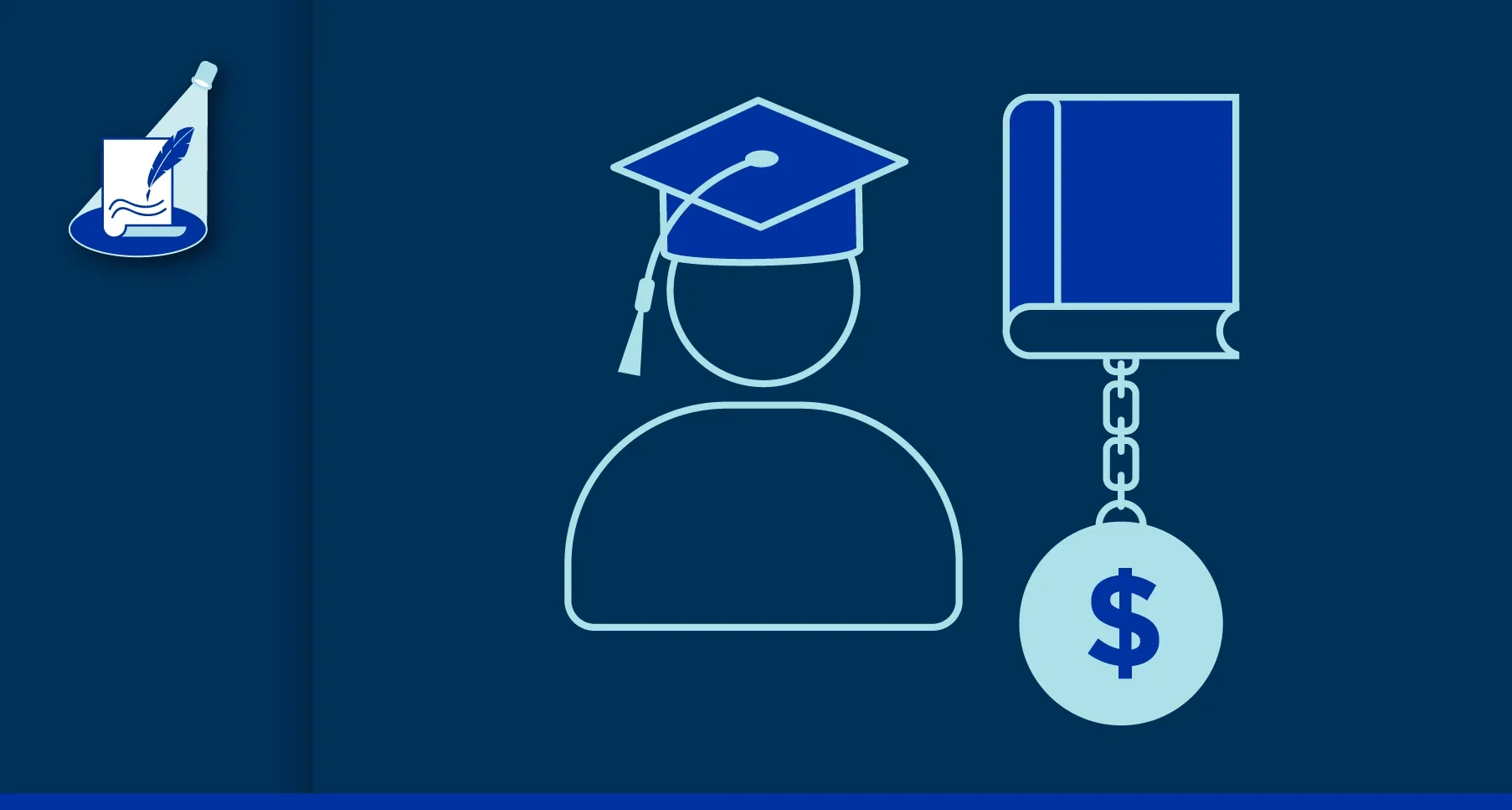The financial stress of student loan debt takes a toll on workers’ physical and mental health and productivity, and your bottom line or social impact. Secure 2.0 makes it easier for employers to help employees invest in their retirement and pay off student loan debt.

As an employer, you likely have workers who are struggling with student loan debt.
Among our TrustPlus clients since the beginning of 2021, 47% have student loan debt, with a median loan balance of $36,717.
The financial stress of student loan debt takes a toll on workers’ physical and mental health and productivity, and your bottom line or social impact.
It often forces them to choose between investing in their retirement now or paying off the cost of their education: The median monthly payment of federal borrowers is $250, according to the Education Data Initiative.
It’s a toxic choice given the nature of compounding interest over time, your workers’ prospects for a financially secure future, and your business’s or organization’s success in the years ahead.
The return of federal student loan interest and payments
Student loan interest will resume starting on Sept. 1, 2023, and payments will be due starting in October according to the U.S. Department of Education.
We wrote about what workers with student loan debt should do to prepare here. Spoiler alert: call your servicer now to discuss your situation if you’re concerned about being able to make payments.
As your employees with student loan debt prepare to make payments again it’s a good time to take a closer look at a few key provisions in Secure 2.0 designed to help employees manage their student loan debt and payments, including through defined contribution plan benefits.
Qualified student loan payments, matching contributions
When student loan debt prevents your workers from contributing to defined contribution (DC) retirement plans, they miss out on your employer matching contributions, and you’re left with the unfulfilled potential of the benefits you already offer.
Secure 2.0 which became law in December helps. Under the new law, sponsors of 401(k), 403(b), governmental 457(b) plans, and savings incentive match plans for employees of small employers (SIMPLE plans) can make matching contributions to employees’ qualified student loan payments (QSLPs) as if they were pretax, Roth or after-tax contributions.
For plan years starting after December 31, 2023, employers can offer the QSLP match even if employees aren’t contributing to a plan, making it possible for employers to eliminate the toxic choice employees often make between investing in retirement and paying down student loan debt.
Massive incentive for small businesses to offer retirement plans
Section 102 of SECURE 2.0 offers a massive incentive for small businesses to offer retirement plans. The three-year small business startup credit increased from 50% of administrative costs to 100% for employers with up to 50 employees, up to a maximum amount of $5,000, and such small businesses can receive an additional credit of up to $1,000 per employee per year.
The future of federal student loans
On June 30, the Supreme Court ruled against the Biden administration’s $400 billion plan to cancel student loan debt, but President Biden said he was going to try again, this time citing authority under the Higher Education Act of 1965.
The process will take several months, best case, and it’s murky how many borrowers will be eligible for relief under whatever plans are proposed and how the plans themselves will fare under inevitable legal scrutiny.
What’s important to know is that interest starts accruing again on September 1 and payments will be due again starting October 1.
Borrowers who will not be able to pay right away will have options under a 12-month “on-ramp” repayment program allowing borrowers with late, missed or partial payments to not be considered delinquent, reported to credit bureaus, placed in default or referred to collection agencies. “Borrowers do not need to take any action to qualify. The period runs from Oct. 1, 2023, through Sept. 30, 2024.”
For your workers with student debt the clock is ticking. Secure 2.0 can help turn time and student loan payments into an asset for your workers and your organization.
As Stacey MacPhetres, senior director of education finance at Bright Horizons — which offers child care, elder care, education and career tools to more than 1,000 of the world’s top employers—tells Insider, “Employers either know about it and want to know exactly what they need to do to get it queued up, or they don’t know about it.”
Schedule a time to speak with TrustPlus about cultivating and harnessing the benefits of a financially healthy workforce today.






